The World Exhibition, also known as Expo, is an international event where countries and international organizations present their latest developments, innovations and achievements.
The idea of a World Exhibition was born out of a desire to showcase a nation's industrial development and technological advances to the world. The first World Exhibition was held in London in 1851 and showcased a variety of inventions and innovations, including the first typewriter, the first toothbrush and the first steam locomotive.
In the following years, other World Exhibitions were held in different countries, including Paris, Philadelphia and Vienna. In 1873, the first World Exhibition in the German-speaking world gave the city of Vienna the opportunity to present itself to an international audience at this showcase of technology and arts and crafts.
The World Exhibitions in the following years focused on different themes such as art, architecture, science and technology and have helped to promote international relations and cooperations and facilitate exchanges between countries.
And today?
Today, World Exhibitions remain an important part of the international community, serving as a platform for countries to showcase their advances and innovations, and to collectively address issues that transcend country, industry or discipline boundaries. After all, it takes courage and consistency to look for answers to major challenges away from the usual routines. Space is needed to exchange ideas and facilitate dialogue. Expo 2025 in Osaka is needed.
Expo 2025 will be held in Osaka from April 13, 2025 to October 13, 2025. The guiding theme of this world exhibition is "Designing Future Society for Our Lives". The 155-hectare event site is divided into three thematic zones. "Saving Lives", "Connecting Lives" and "Empowering Lives". Japan and Austria share the vision of a responsible and sustainable future, therefore Austria will participate in the segment "Empowering Lives" with its own pavilion.
In total, more than 28 million visitors, about 160 participating countries and 9 international organizations are expected.
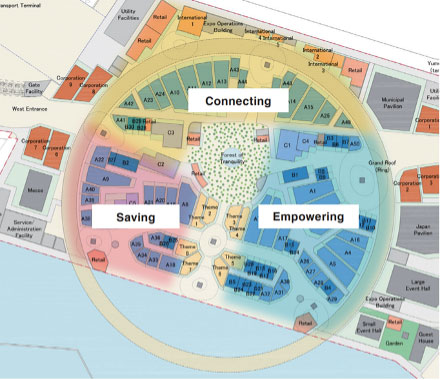
The architectural office trecolore architects of architect DI Hermann Dorn realized the Austrian contribution in cooperation with DI Klaus Baumgartner. The pavilion presented itself as an impressive stage for sensory experiences. From the outside, the simple cubature of the pavilion was branded with the prominent lettering "Austria" in the upper half of the façade, and was permeably transparent in the access area. Inside, various theme stations were offered under the motto "The Art of Living". The central design element was "The Slope", a sculpturally expressive wooden construction where visitors could toboggan, as an abstracted quotation of a mountain, which served as an action and interaction surface for a variety of events.
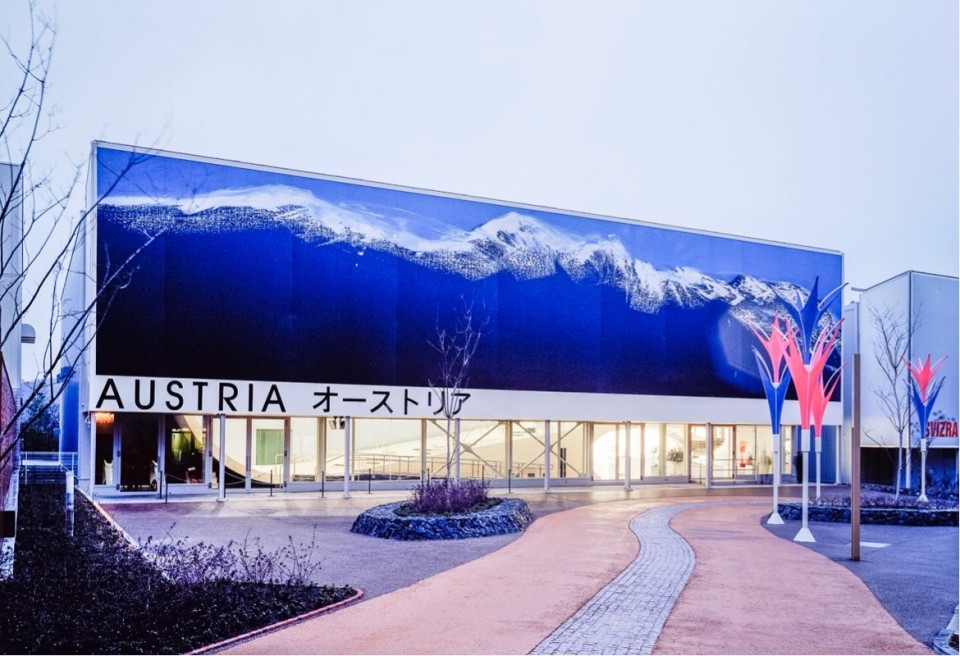
The architectural office trecolore architects of architect DI Hermann Dorn realized the Austrian contribution in cooperation with DI Klaus Baumgartner. The pavilion presented itself as an impressive stage for sensory experiences. From the outside, the simple cubature of the pavilion was branded with the prominent lettering "Austria" in the upper half of the façade, and was permeably transparent in the access area. Inside, various theme stations were offered under the motto "The Art of Living". The central design element was "The Slope", a sculpturally expressive wooden construction where visitors could toboggan, as an abstracted quotation of a mountain, which served as an action and interaction surface for a variety of events.

The architectural concept for the Austrian Pavilion came from the Strauss-Solid-Ritter consortium. The project offered an innovative overall solution in the interplay of architecture, art and business. With interactive "water landscapes", the Austrian appearance presented the quality, competence and beauty of the water-rich country in a surprising and progressive way. In the center of the pavilion, a walk-in snow globe awaited the visitors. Even from a distance, on the façade of the pavilion, visitors were greeted by an oversized photographic glacier landscape by artist Walter Niedermayr.
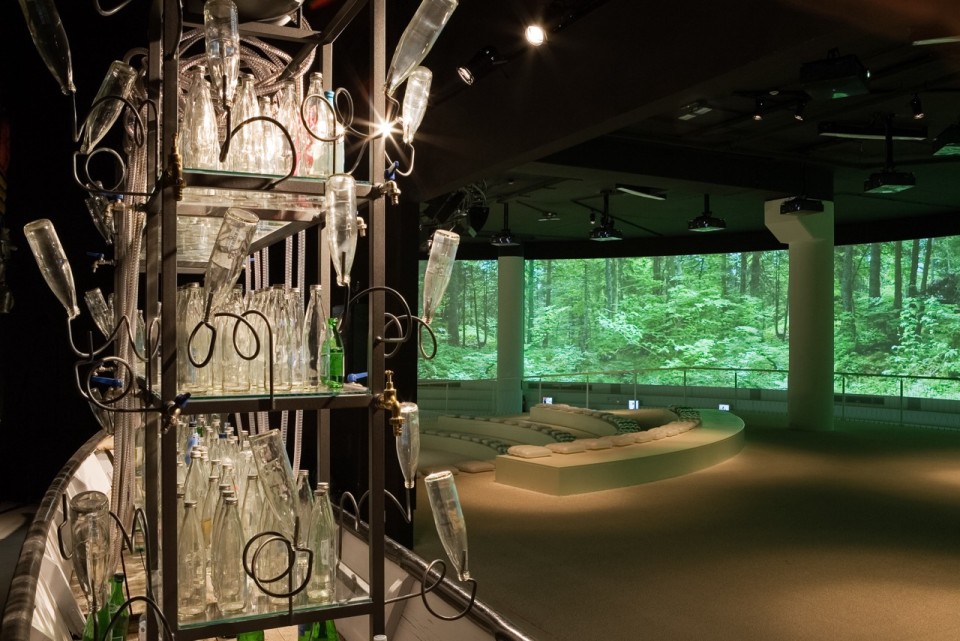
The architectural concept for the Austrian Pavilion came from the Strauss-Solid-Ritter consortium. The project offered an innovative overall solution in the interplay of architecture, art and business. With interactive "water landscapes", the Austrian appearance presented the quality, competence and beauty of the water-rich country in a surprising and progressive way. In the center of the pavilion, a walk-in snow globe awaited the visitors. Even from a distance, on the façade of the pavilion, visitors were greeted by an oversized photographic glacier landscape by artist Walter Niedermayr.

Austria was represented with a spectacular pavilion made of porcelain by the architects Span&Zeytinoglu. In the pavilion, Austria was presented in a harmonious balance between urban and rural areas, cultural tradition, a modern way of life, an intact environment and innovative technology using multimedia.
Austria was represented with a spectacular pavilion made of porcelain by the architects Span&Zeytinoglu. In the pavilion, Austria was presented in a harmonious balance between urban and rural areas, cultural tradition, a modern way of life, an intact environment and innovative technology using multimedia.
With "breathe austria", Austria presented a pointed contribution to the Expo's central theme. A 560 m² forest provided a sensory experience of air and climate. The 100 percent forest planting was a model contribution to urban practices, because the integral use of landscape can provide urban life forms with sufficient oxygen and cooling air. This in turn referred to Austria's sustainable reforestation policy and at the same time served as a model for modern urban planning. The amount was realized by team.breathe.austria.
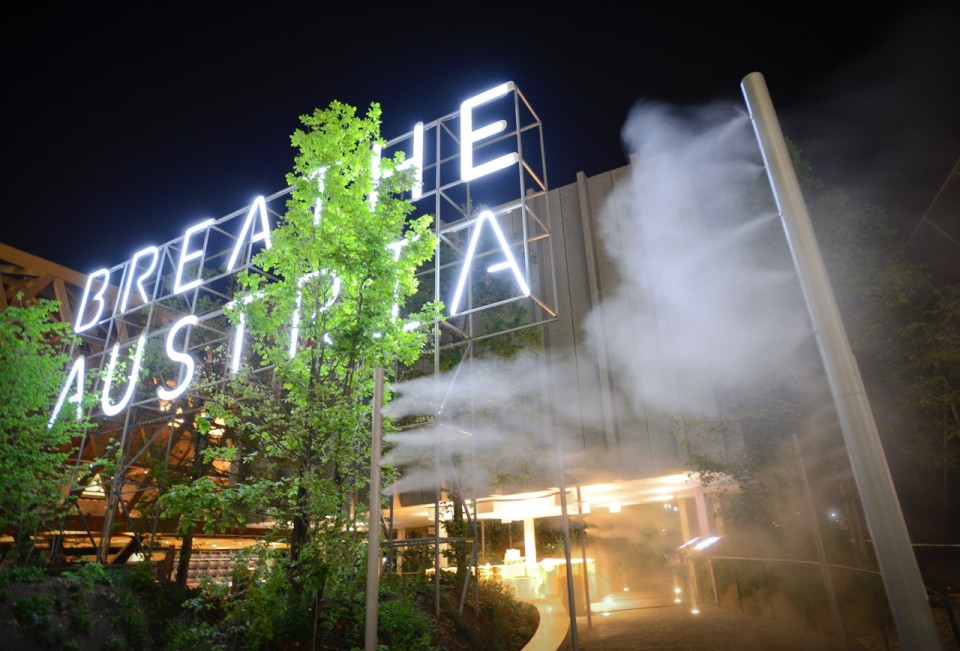
With "breathe austria", Austria presented a pointed contribution to the Expo's central theme. A 560 m² forest provided a sensory experience of air and climate. The 100 percent forest planting was a model contribution to urban practices, because the integral use of landscape can provide urban life forms with sufficient oxygen and cooling air. This in turn referred to Austria's sustainable reforestation policy and at the same time served as a model for modern urban planning. The amount was realized by team.breathe.austria.

With the Austrian concept by BWM Architects, Austria playfully dealt with the theme of the Expo. In a combination of high-tech and low-tech, interactive, surprising energy machines were driven by visitors. The focus was on playfully raising awareness or becoming aware of one's own possibilities and responsibility as a prerequisite for dealing with energy respectfully.
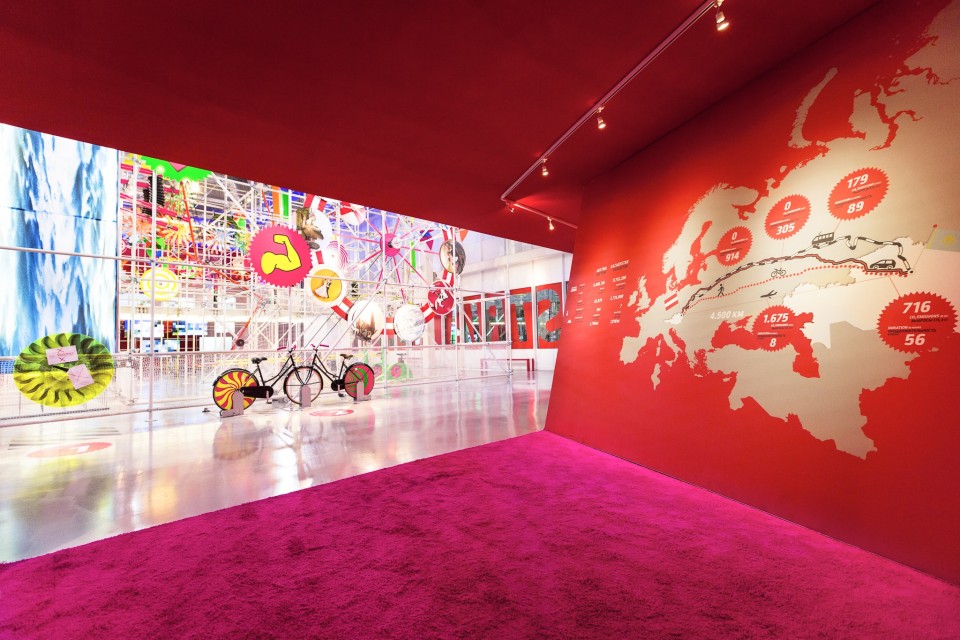
With the Austrian concept by BWM Architects, Austria playfully dealt with the theme of the Expo. In a combination of high-tech and low-tech, interactive, surprising energy machines were driven by visitors. The focus was on playfully raising awareness or becoming aware of one's own possibilities and responsibility as a prerequisite for dealing with energy respectfully.

The architecture office querkraft realized a pavilion that combined Arabic-archaic wind towers with contemporary air-conditioning technology to create a signal against climate-damaging waste. The pavilion presented its motto "Austria makes sense" in several ways: with sustainable architecture, the exhibition and the innovative projects and products in the iLab, which showed Austria's innovative strength and economic competence. At the same time, the pavilion was a place for reflection, where visitors could consciously perceive themselves and the environment.
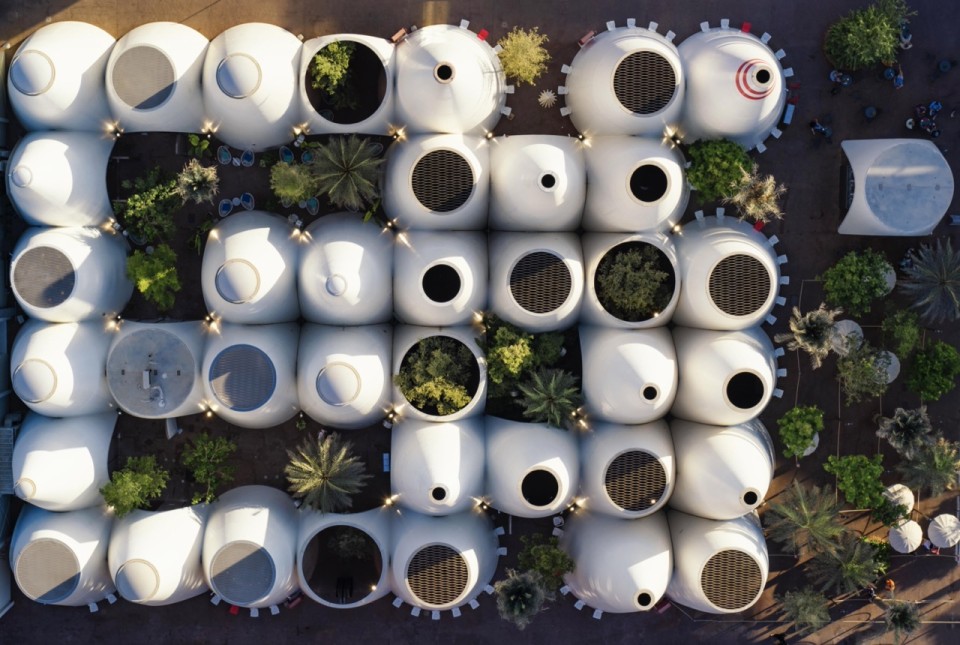
The architecture office querkraft realized a pavilion that combined Arabic-archaic wind towers with contemporary air-conditioning technology to create a signal against climate-damaging waste. The pavilion presented its motto "Austria makes sense" in several ways: with sustainable architecture, the exhibition and the innovative projects and products in the iLab, which showed Austria's innovative strength and economic competence. At the same time, the pavilion was a place for reflection, where visitors could consciously perceive themselves and the environment.
